Grab your pantyhose and let’s make inverted eggs, a Japanese foodie favorite from the Edo period

Today in the SoraKitchen we’re trying out hand at one of the 10,000 Cooking Treasure Secrets of a samurai-era cookbook.
With the proliferation of social media and high-quality smartphone cameras, photographing your food has become a worldwide phenomenon. Japan was ahead of the game in that regard, though, as taking snapshots of gorgeous or unique-looking meals was a thing among Japanese foodies even before digital photography.
Actually Japan’s deep appreciation for aesthetics in edibles goes back even further. In 1785 the Manbo Ryouri Himitsubako (“Box of 10,000 Cooking Treasure Secrets”) was published, and this Edo-period cookbook contains a recipe for something called hanten yudetamago, or “inside-out boiled eggs.”
So what makes them inside-out? If properly prepared, the white and yolk of the egg will swap places, so that when you peel away the shell the egg will be yellow on the outside with a white center.
▼ The plan

Our Japanese-language reporter Haruka Takagi wanted to try making some inside-out eggs, but seeing as how it’s been more than two centuries since the Manbo Ryouri Himitsubako’s recipe was published, she decided to use some more modern tools and technology.
For this recipe, you’ll need:
● An egg
● One pantyhose stocking
● A flashlight
● Tape
● A rubber band
▼ Yeah, it’s weird that the food is the outlier in what’s needed for this recipe, but here we are.
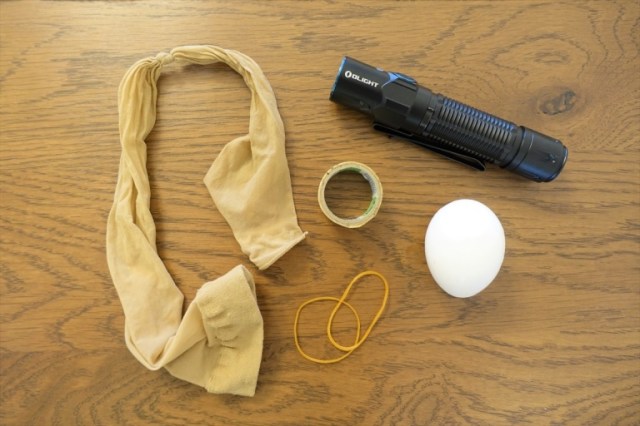
Step 1: Tie a knot near the middle of the stocking. Place the egg inside the stocking, then seal the stocking tightly with the rubber band. You want to make sure the egg is situated like it is in the photo below, with the tips pointing out away from the stocking.
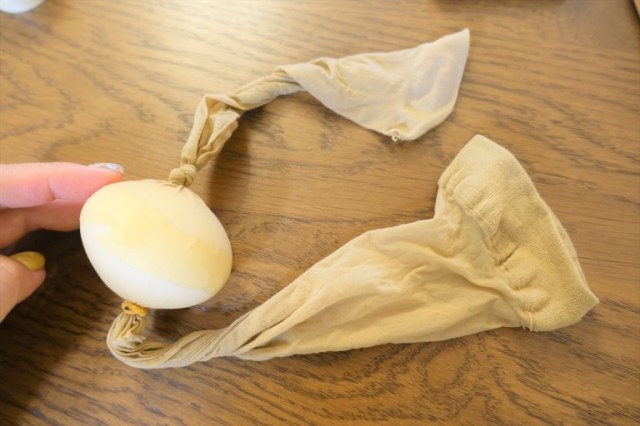
Step 2: Grab the two ends of the stocking, and start spinning!
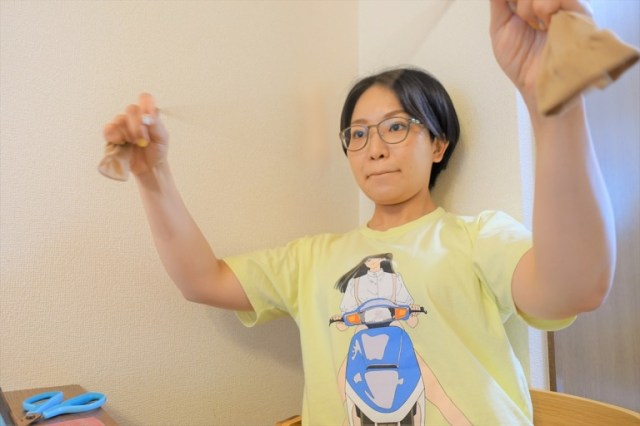
Why? Because in order to invert the contents of the egg, we need to break the yoke without breaking the shell, so we’re going to use the high-speed momentum to get the inside sloshing around enough to do just that.
Step 3: Things start to get tricky here. You want to spin the egg until the yolk breaks, but not too much more than that. So how do you know if the yolk is broken without cracking the shell?
There are two ways. One is to listen for a popping or tearing sound coming from inside the egg, which should occur when the yolk breaks. Unfortunately, you may not be able to notice this sound (Haruka didn’t), especially if you’re shouting “Wheeeeeeee!!!!” while you’re spinning the egg around.
In that case, you’ll need to use the flashlight. Normally, if you shine a bright light on an egg and look at it from the other side, the light should pass through easily, and it’ll look like this.
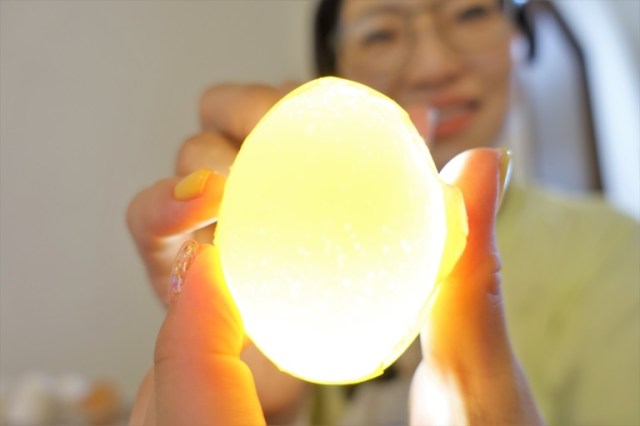
On the other hand, if the yolk has broken it’ll be harder for light to pass through, and the egg will look like this.
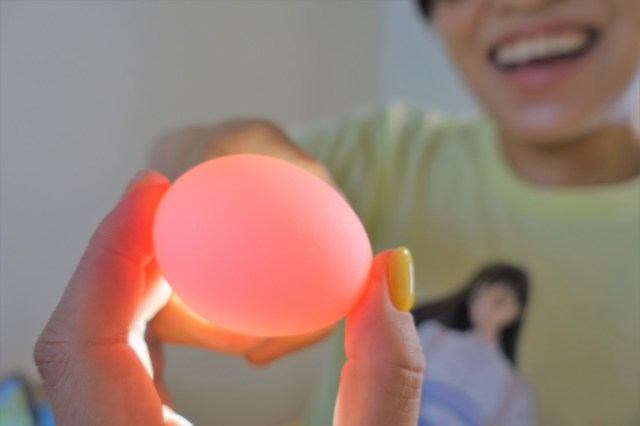
Step 4: Wrap the eggs with tape, then boil them for 10 minutes.
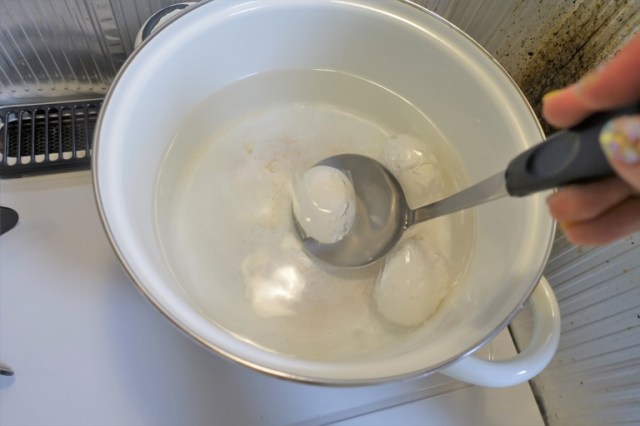
Step 5: After boiling, remove the eggs and chill them in a bowl of ice water.
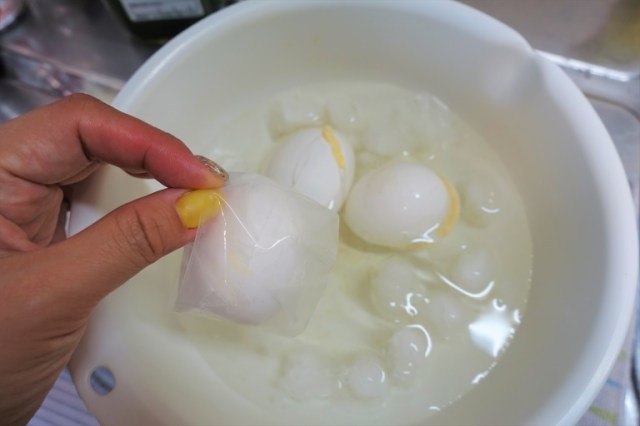
Step 6: After the eggs have chilled, peel their shells, and you’re done!
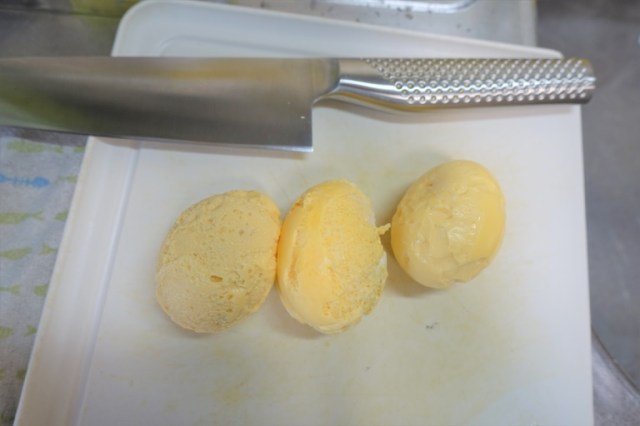
Sure enough, Haruka’s eggs were yellow on the outside! And on the inside…

…they were sort of white!
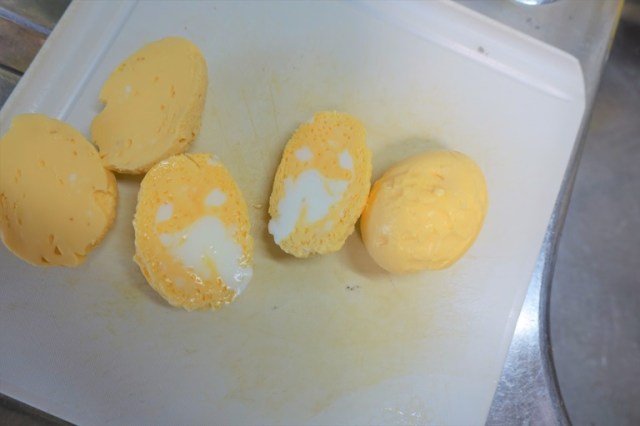
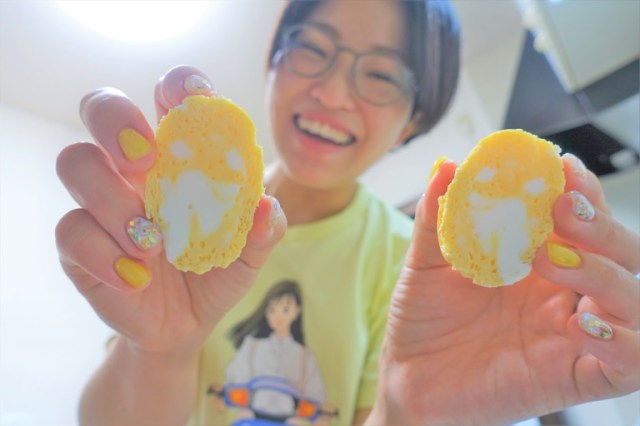
Remember when we said that you have to spin the egg enough to break the yolk, but don’t want to spin it much more than that? It seems like Haruka kind of overdid things, and her excessive spinning meant that after the yolk broke, she ended up mixing it too thoroughly with the rest of the egg, which is why some of hers turned out a uniform yellow, like a scrambled egg. That also explains why some of the eggs became more inverted than others.
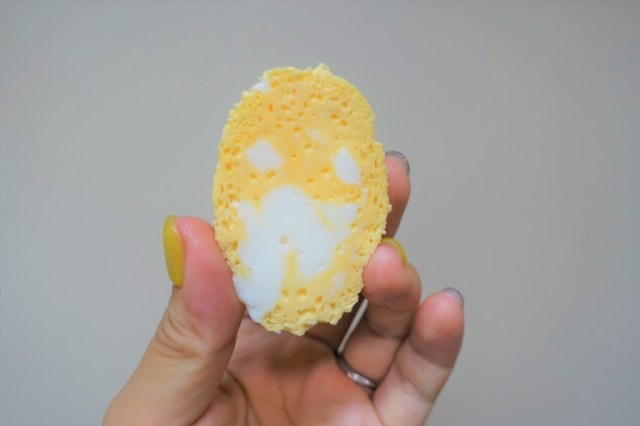
For Haruka, taking a bite felt a little discordant, since you’re essentially getting the stronger eggy flavor and more powdery texture of the yolk as your first sensation, which is the opposite of what happens when you eat a regular boiled egg.
▼ It’s not just how they look, but the eating experience too that’s inside-out.

But hey, maybe that’s something you’d get used to, just like how you probably get used to how long you have to spin the egg for the best visual results.
Photos © SoraNews24
● Want to hear about SoraNews24’s latest articles as soon as they’re published? Follow us on Facebook and Twitter!
Credit:

0 comments: